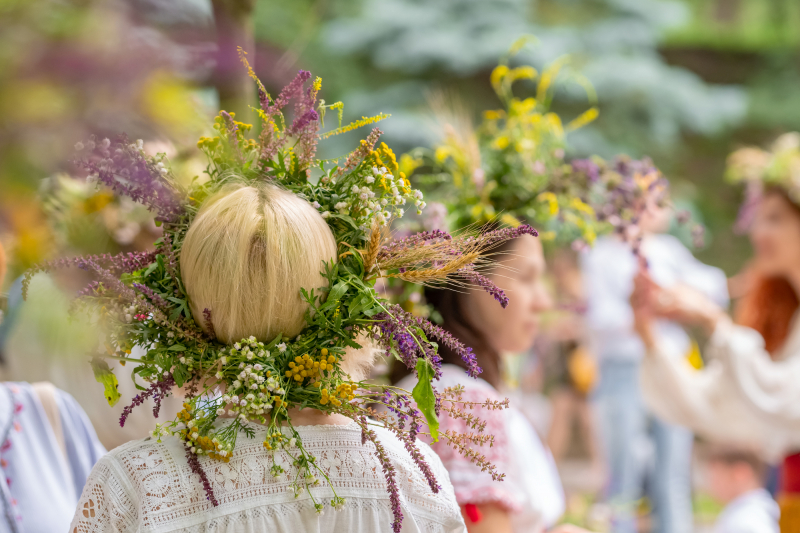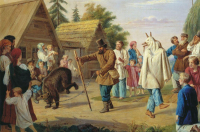Kupala Night is the Slavic celebration of the summer solstice – a phenomenon that, along with spring and autumn equinoxes and winter solstice, is a crucial part of the annual holiday cycle. Astronomically, the moment when the day equals the night can shift, but it was still common to celebrate it on June 24 – a generalization of sorts.
Quite a lot is known about the activities ancient Slavs would partake in on this day. Among the common rituals, along with making bonfires, dancing, singing, and khorovods, were:
-
Jumping over the cleansing fire. Summer solstice celebrates the solar god Yarilo and fire is one of its facets. A description of this ritual can be found in a popular folk fairytale about Snegurochka, a girl made out of snow who jumped over the fire on Kupala Night and melted.
-
Throwing wreaths into the water. Young girls did it in an attempt to find out their romantic future, which depended on the way how and where the wreath flows. Young men, on the other hand, tried to catch the wreath of the girl they liked.
-
Looking for the fern flower. According to legends, the flowerless plant only blooms on Kupala Night and whoever finds it will be granted luck and happiness.
All of the above has to do with the pagan pre-Christian version of Kupala Night. However, the Orthodox Christian church celebrates it, too. In this case, the holiday obviously has nothing to do with Yarilo and the solstice – instead, this date commemorates the birth of John the Baptist. The celebration includes special church services dedicated to this saint and associated rites like confession and the Eucharist.
So, how come do these holidays share a date? Theories vary – some say this is merely a coincidence, albeit a significant and symbolic one, while others believe that Ivan Kupala is just another name for John the Baptist (Ivan is the Russian version of the name John and Kupala derives from the verb kupat’ – to bathe). Therefore, it might be that the pagan summer solstice celebration was Christianized and, in such a manner, pagan and Christian traditions were combined, making it hard to make sense of their origin and initial meaning nowadays.




